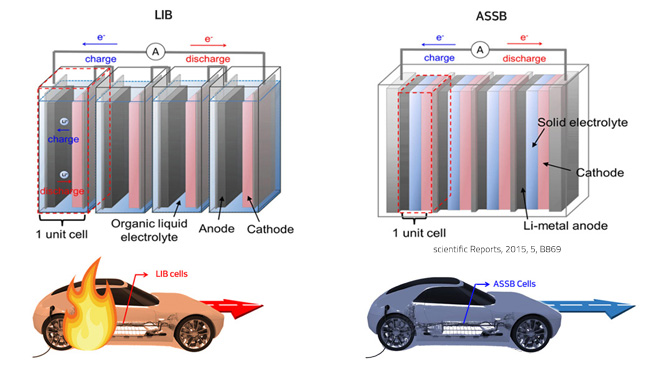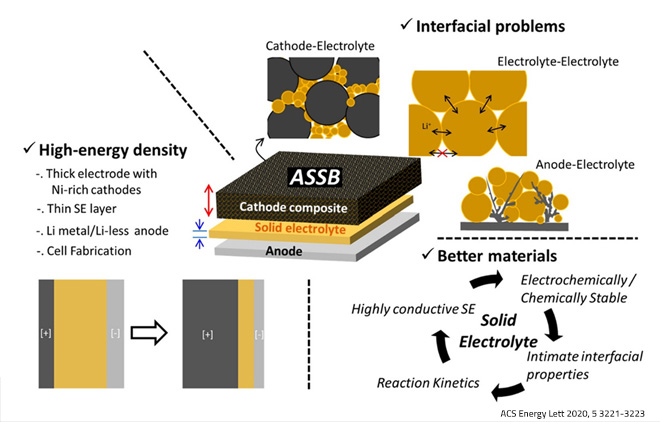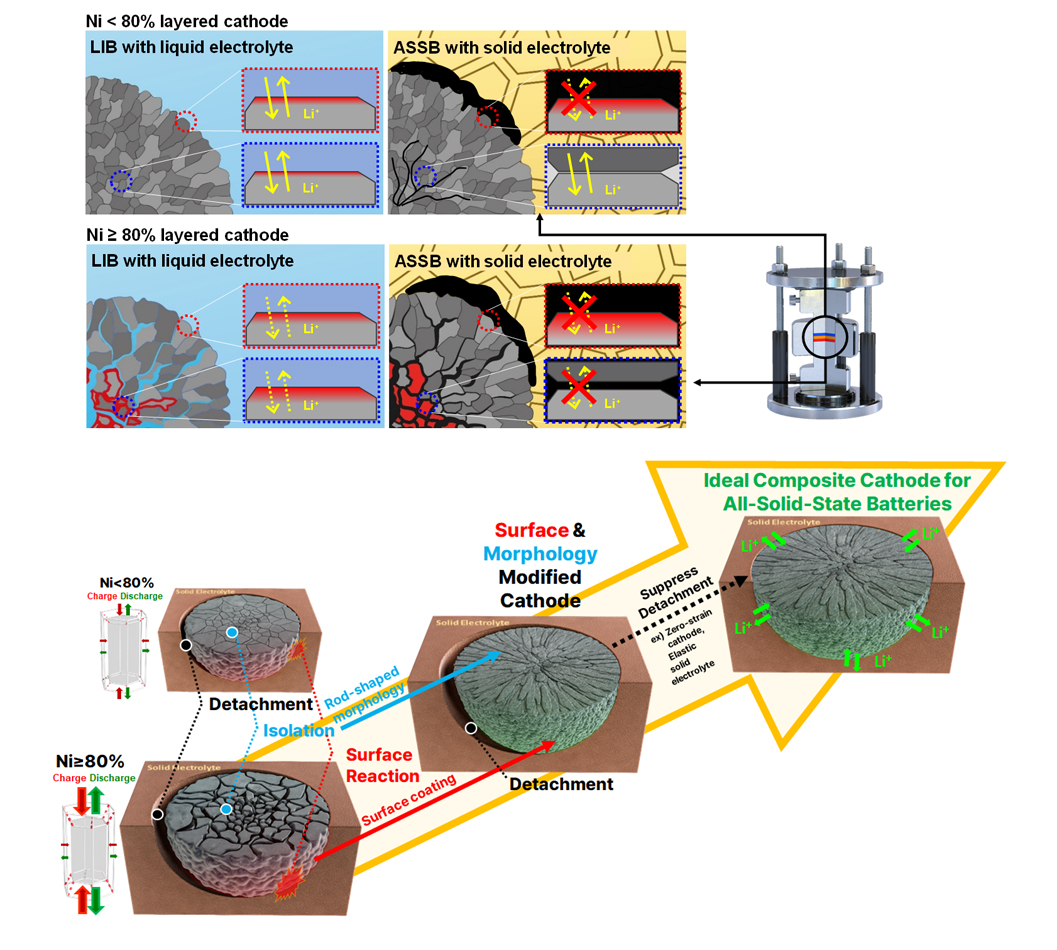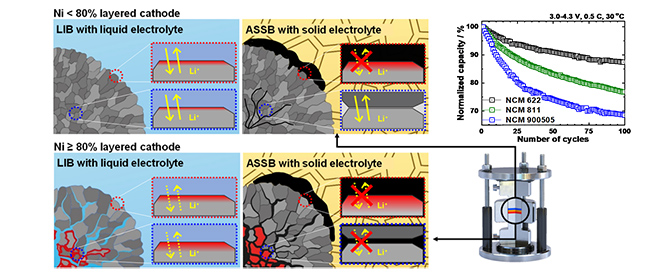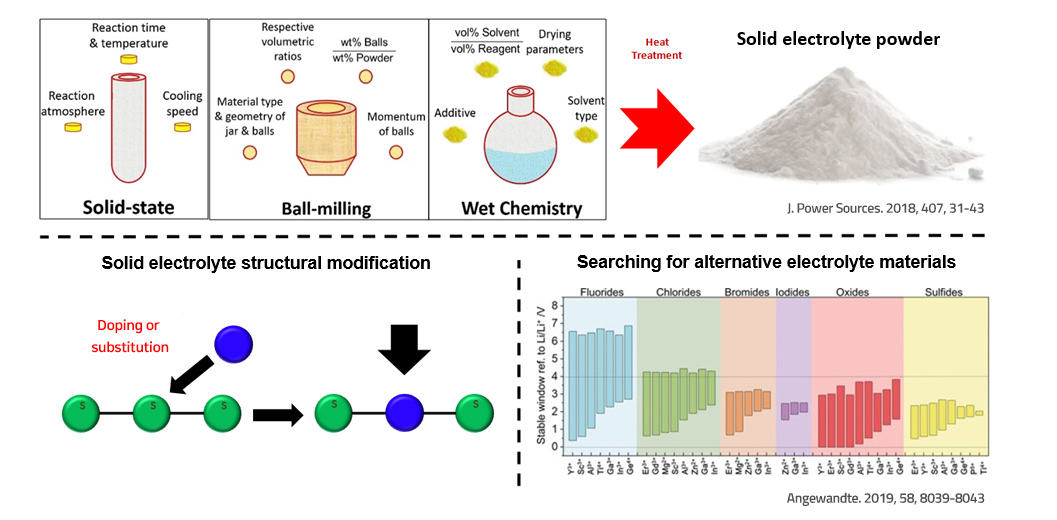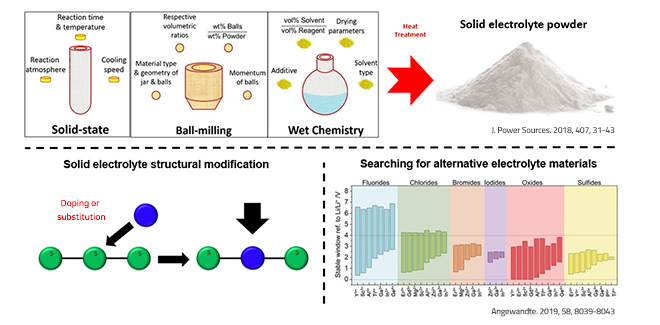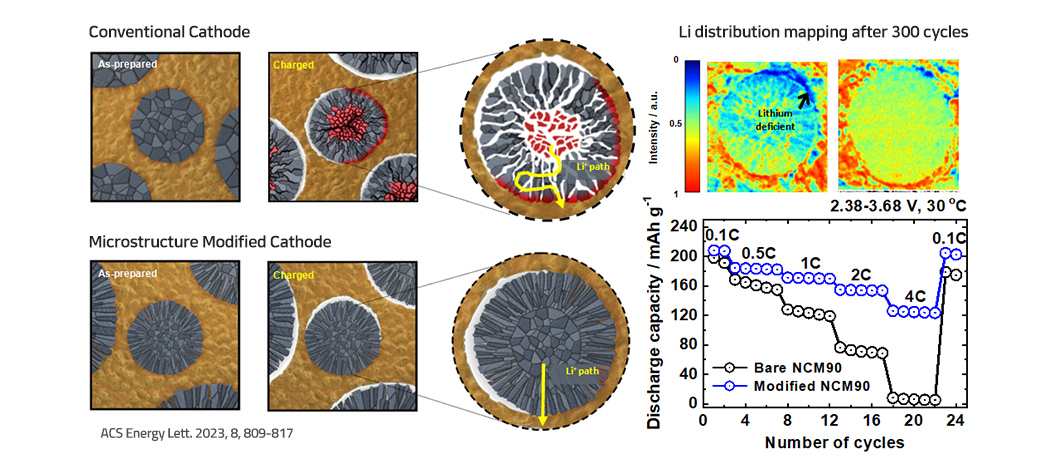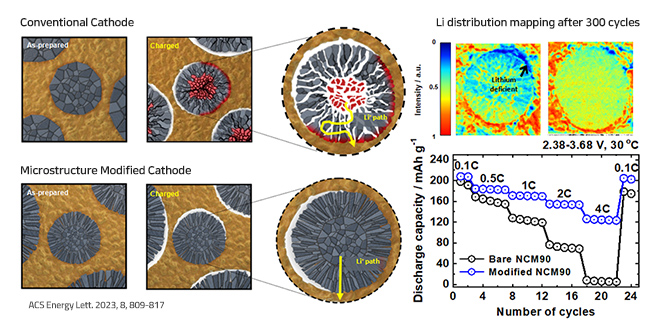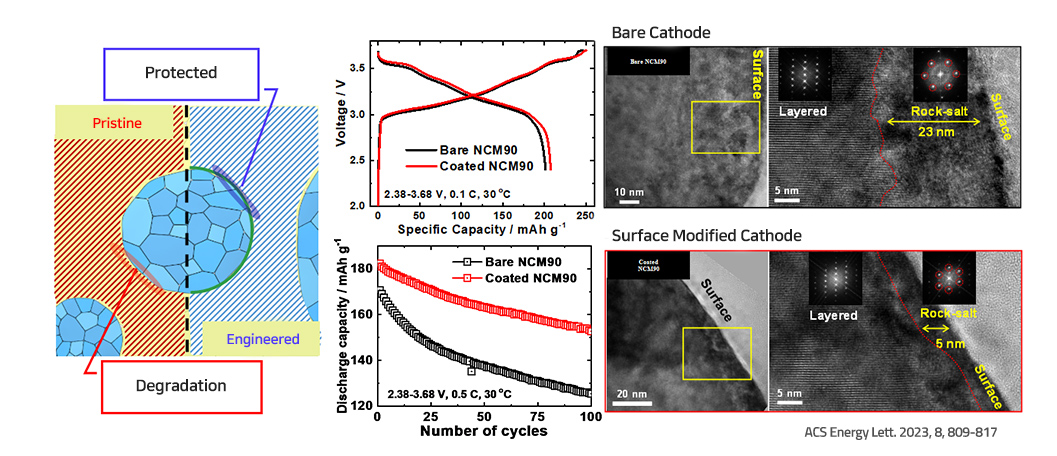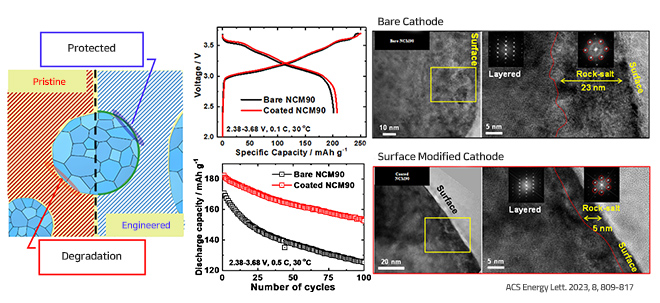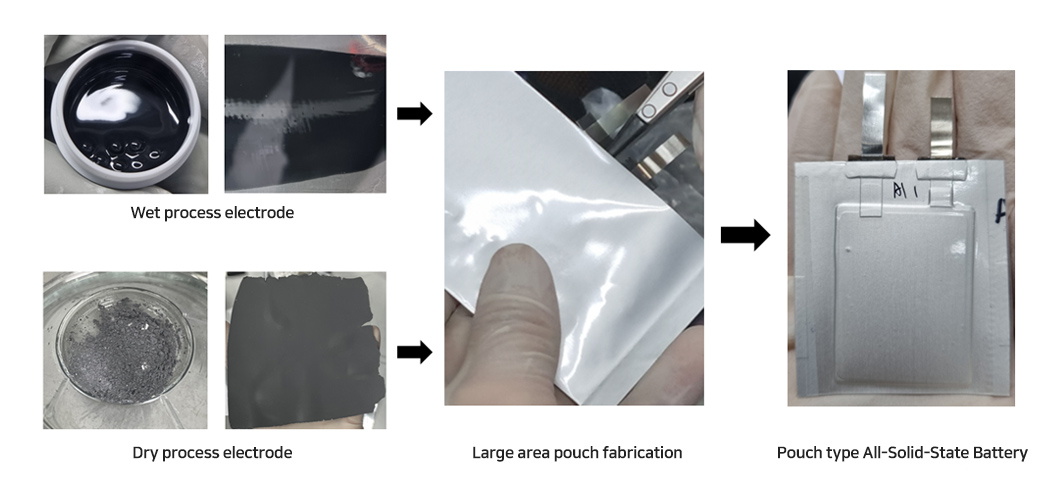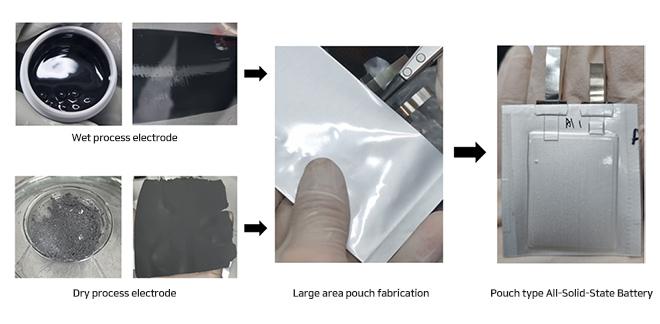Fundamentals on All-Solid-State Batteries
All-Solid-State Battery is a promising next-generation battery, ensuring safety and high energy density from its inflammable characteristic and bi-polar
stacking. The Li-ion battery using liquid electrolytes contains safety hazards due to its volatile and flammable characteristics. In contrast, solid electrolytes are
nonvolatile and nonflammable. Therefore, All-Solid-State Battery guarantees safety. For this safe battery to be desired by everyone, the All-Solid-State
battery should have significant improvement.
The commonly known causes of performance degradation in All-Solid-State battery are interfacial reaction problems between the particles. Unlike well-
studied liquid electrolytes mechanisms, that of solid electrolytes requires more research. We thoroughly research the difference between them to mitigate
the problem while maintaining high energy density and to define which cathode material suits best for All-Solid-State batteries.
Investigating degradation mechanism
We demonstrate the trends of all-solid-state NCM with different Ni contents, that is, the clear correlation between capacity or cycling stability with Ni content.
Meanwhile, recent investigations on the microstructural evolution and design strategies of Ni-rich cathodes for advanced LIBs have caught our attention as a
possibly overlooked clue to solving the aforementioned puzzle in the ASSB field.
Solid Electrolyte Synthesis
The most fundamental material in the All-Solid-State Battery is a solid electrolyte, and synthesizing methods are being researched in our lab. We synthesize
sulfide solid electrolyte that has high ionic conductivity, but its electrochemical window is too narrow limiting its usage. Therefore, we modify sulfide solid
electrolytes by doping or substituting stable material to improve its stability. Or, a different type of solid electrolyte is synthesized that a has wide
electrochemical window with high ionic conductivity. Our final goal of solid electrolyte research is synthesizing the next-generation solid electrolyte for the
best conductivity with outstanding stability.
Microstructure Engineering
With microstructure tailoring on the cathode, the All-Solid-State Batteries can have high electrochemical performance with long cycle retention.
The long and radially straight particles from the core shorten the Li+ path and mitigate isolated particles. Our research further investigates the morphology
and design for mechanical advancement for the best cathode to apply in All-Solid-States Battery.
Interface Engineering
When the contacting surface area between solid electrolyte and cathode is degraded into electrochemically inactive material, the performance of battery
instantly fails. To mitigate the degradation, we thoroughly investigate the chemical reaction between the cathode and solid electrolyte to examine the
interface mechanism. With understanding of the mechanism, we engineer the surface of cathode particle to protect chemical degradation while maintaining
conductivity. We continue to enhance the interface engineering to protect the surface of cathode to bring out its full potential.
Large-area pouch cell
Most All-Solid-State battery labs electrochemically test their material in pelletized electrodes. However, it is merely lab scale application which is far different
than industrial application. For practical application, All-Solid-State batteries should be applied in pouch type cells. However, there are many differences
between pouch type batteries from pellet batteries, such as different constant pressure and thicknesses of electrodes. We research to overcome the
problems from the difference, so that All-Solid-State battery technology can be applied in our life.

